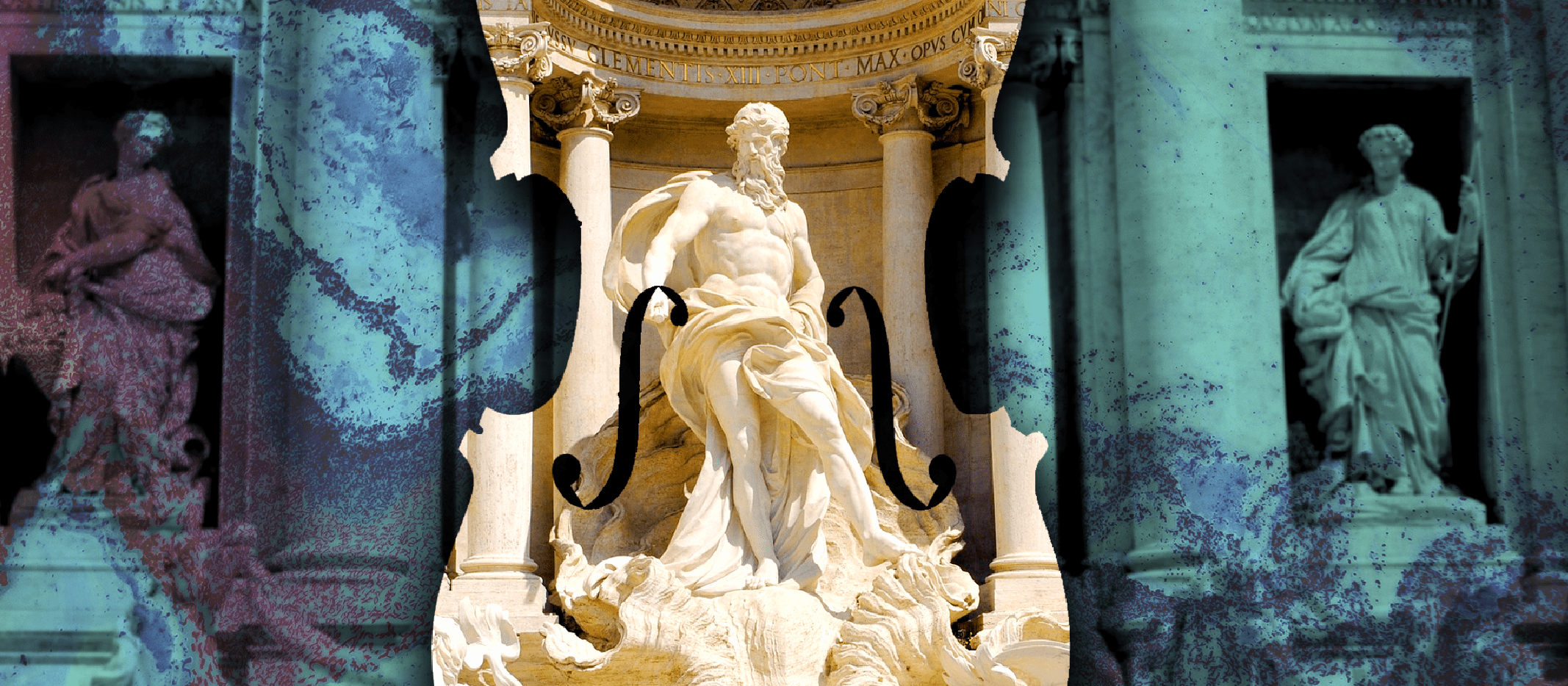The History of Music in the West is full of studies on the importance Italian music had in the period we are concerned with here. Nevertheless, we think it is always good to give a summary to help listeners of Dall’Italia to understand our proposal.
The well-established family of alla italiana bow instruments led by the violin and others for L’accompagnamento, always in time to basso continuo and L’armonia concertante, with the contrasting solo e ripieni (at times Il solista, at times Concerti Grossi, that is, all of them), adds to the instrumental “voice” developed from the Aria, a profusion of vertiginous scales and rhythms within tonal harmony (Elementi d’armonia with reminiscences of the tonic in Italian return to All’unisono e ottava), thus unmistakably distinguishing the attractive Italian music of the 18th century.
The first part of the programme takes us to aspects that fascinated Europe, a fashion that reached the Americas. Vivaldi’s violin concerto in E flat major, RV 253, known as La tempestad di mare, in il Cimento dell’armonia e dell’inventione (published in Amsterdam, by Le Cène in 1725), stresses another character of Italian music, especially in the Venetian composer’s: program music. In this collection, peak of his compositional maturity and full of overflowing fantasy, melodic and rhythmic, he evokes descriptive instrumental sounds of stormy seas, violent winds, tempestuous seas full of rain, wind, lightning, thunder, swell and even the calm after the storm.
With Locatelli and his Concerto grosso, in F Major Op. 1 Nº 7, we will have the chance to listen to a good example of delle Dodici Concerti grossi à 4 e à 5, as evidence of the heritage of Monteverdi concitato and later agitato, in a display of beautiful, nearly vocal, dialoguing melody, on the strings of a solo violin, speaking to its fellow d’Arcchi e continuo, within another of the features of 18th century Italian music, l’Accuratezza, that is, accuracy.
Dell’Abaco’s Concerto grosso, in D major, Op. 5 Nº 6 captivates the listener with ingenious melodies (reminiscent of the Agostinian lesson musica est scientia bene modulandi) distributed in tempting movements (allegro, aria cantábile, ciaccona and rondeau…) in exultingly elegant and rhythmic progressions that make this Concerti à più istrumenti collection (published in Amsterdam by Jeanne Roger in 1719) one of the most delicious works by the Verona composer, imitatio Vivaldi.
After the interval, the OBdT is performing three examples of how Italian fashion burst into the Spanish Court and was also able to adapt and create new hybrid styles. While there is an Italianisation of Spanish music, a Hispanicisation of Italian music also takes place, full of elementi d’armonie, inventions of Italian music, popular Spanish dances in Diverse bizzarie sopra la vecchia sarabanda ò pur ciaccona, by Nicola Matteis, the elegant Concerto spagnolo a cinque, in C minor, Op. 10 Nº 11, by Tomasso Albinoni (written for the Marquis of Castelar) and the beautiful Musica notturna delle strade di Madrid, by Luigi Boccherini. Vivaldi’s Il cimento dell’armonia e dell’invenzione turns the table and becomes Corellian wind mills of folías, opere e teatrali introduttioni, whose asymmetric phrases and improvisation shows us the friendly segreto matrimonio barocco of Spain and Italy.
Lorena Padrón, first violin and conductor
Sergio Suárez, Laura Díaz and Mario Braña, Baroque violins I
Judith Verona, Leo Rossi and Giovanni Déniz, Baroque violins II
Iván Saenz and Melchor García, Baroque violas
Fernando Santiago and Diego Pérez, Baroque cellos
Juan Carlos Baeza, double bass
Carlos Oramas, theorbo
Raquel García, harpsichord
Out of consideration for other users and the performers, this show is not available to children under 5.
19:30
